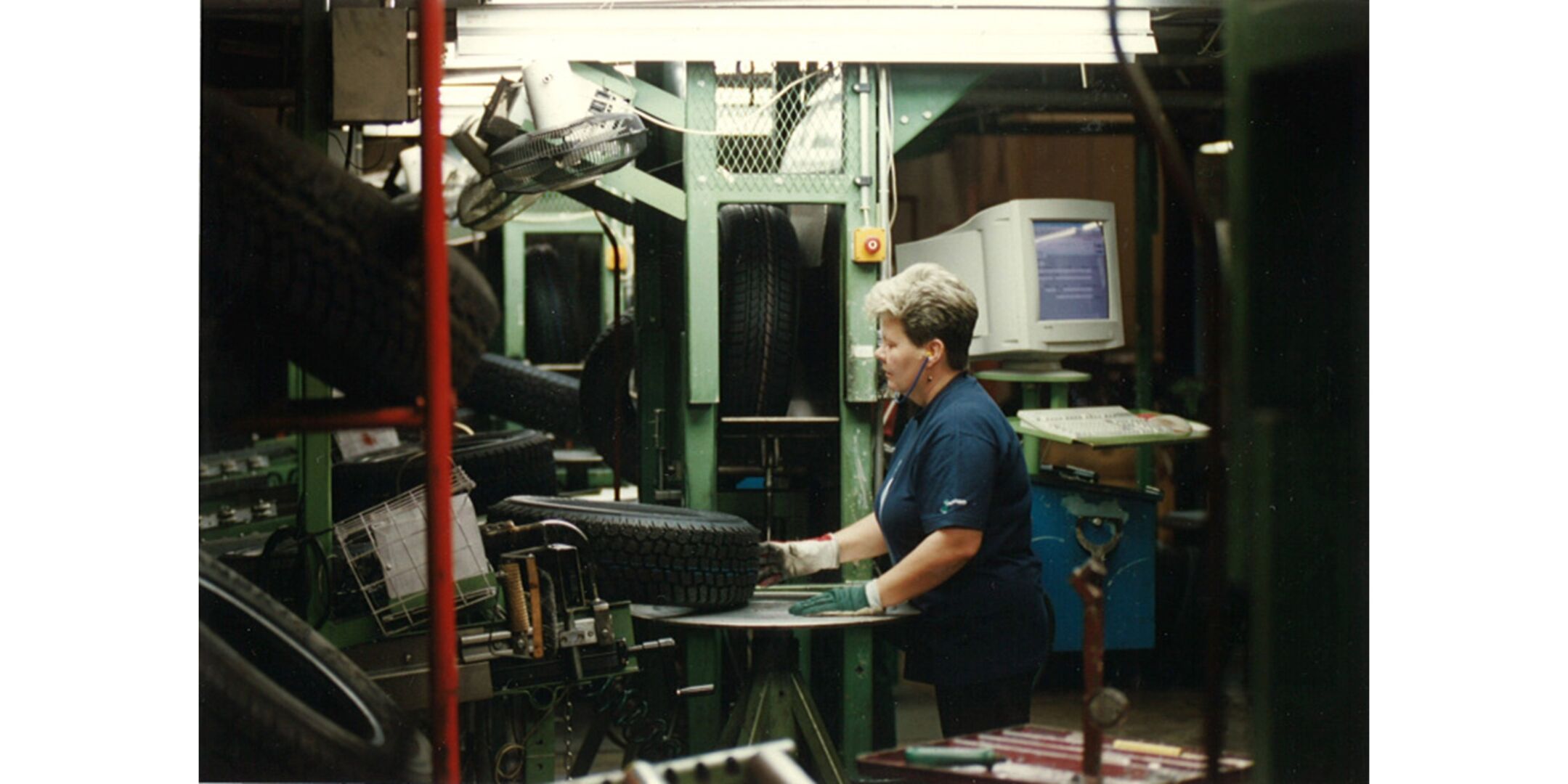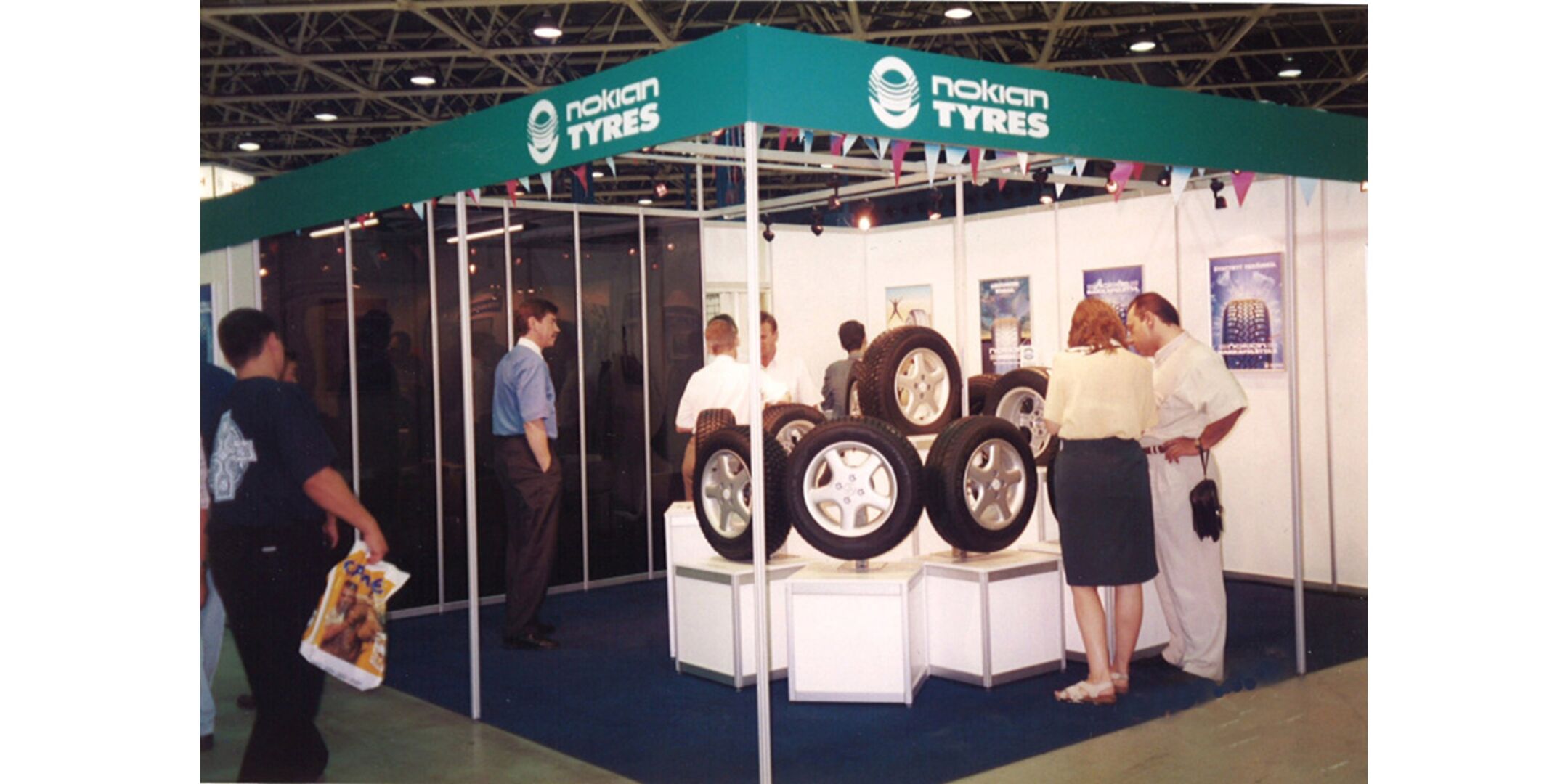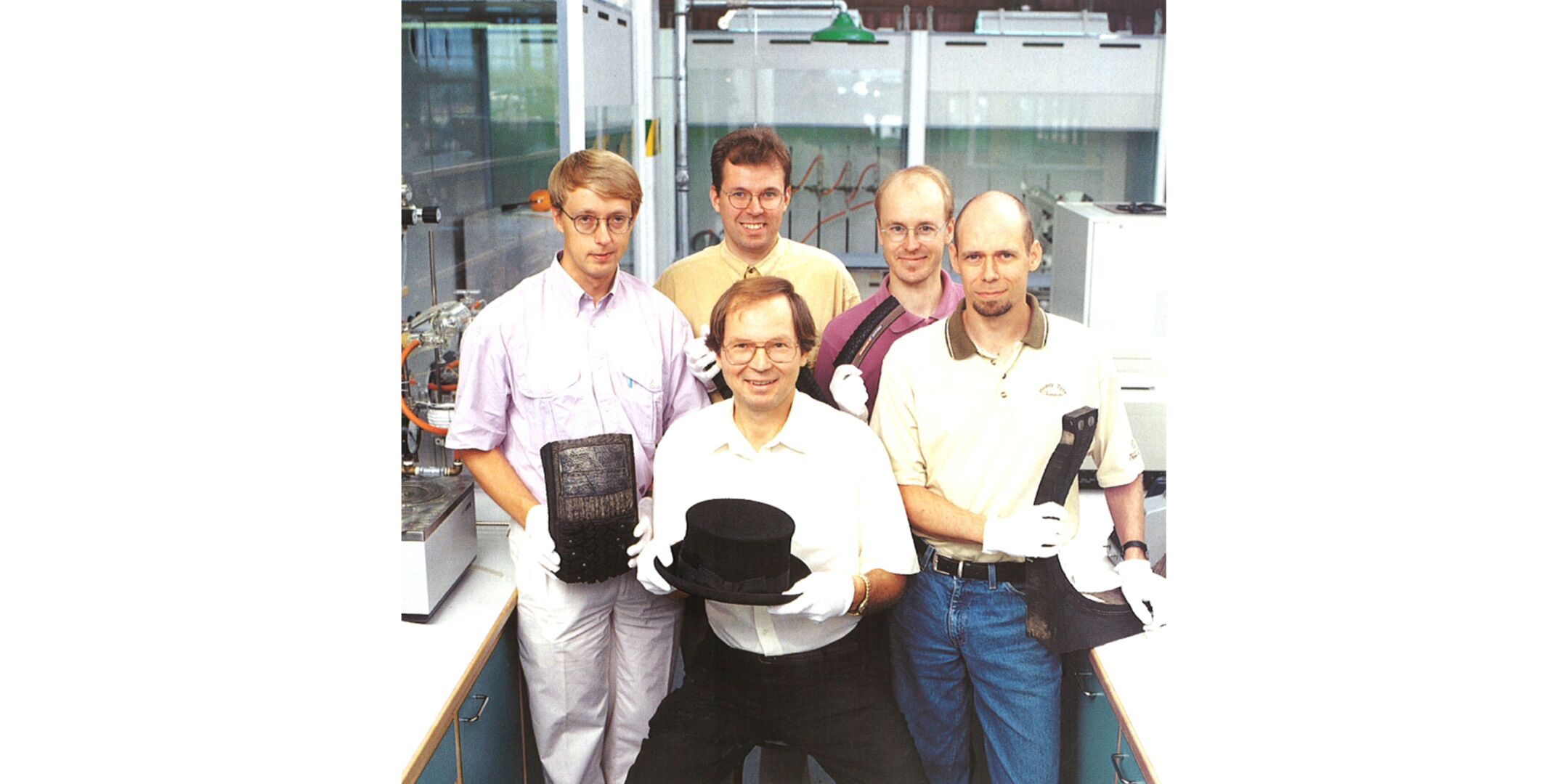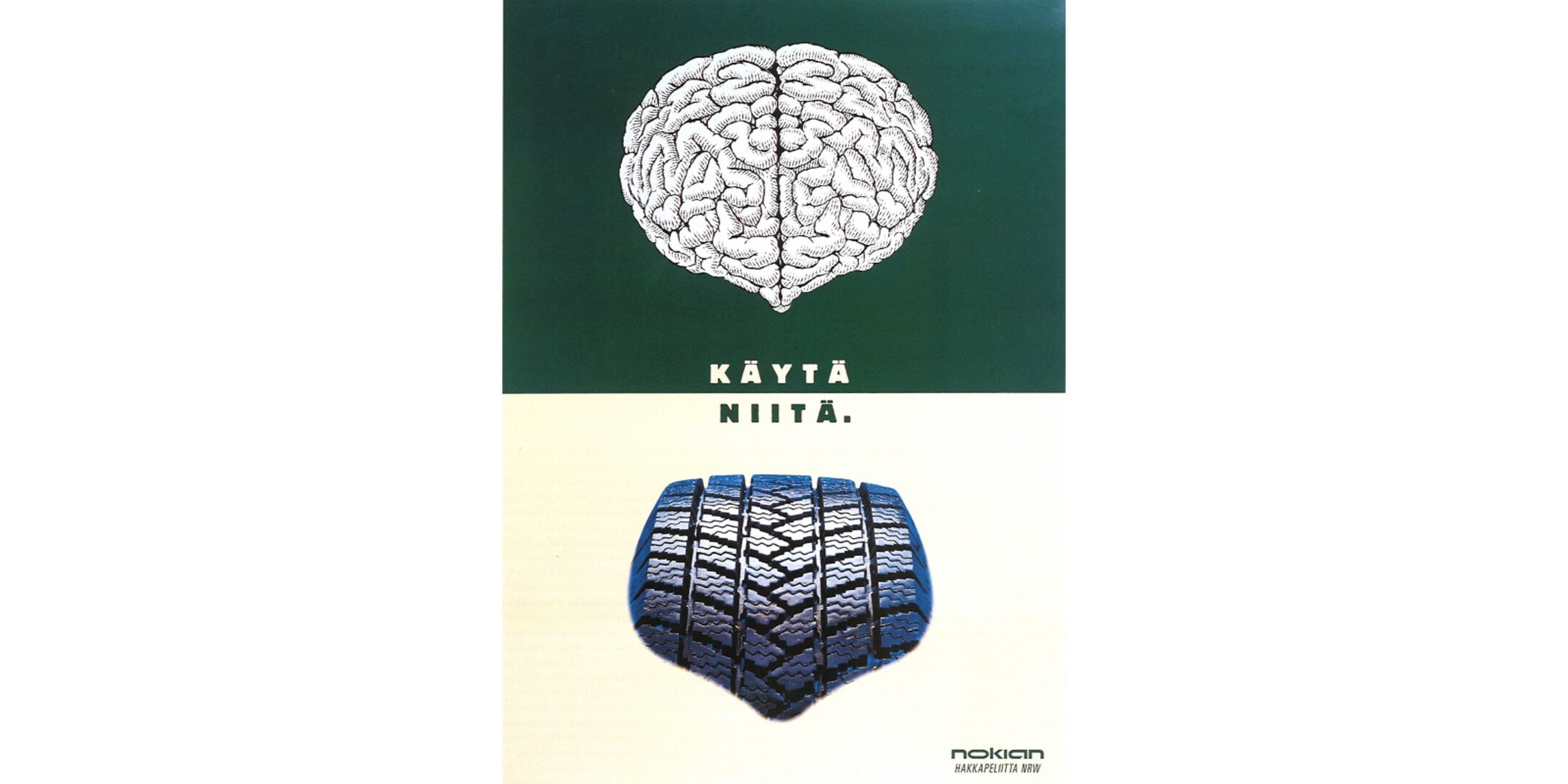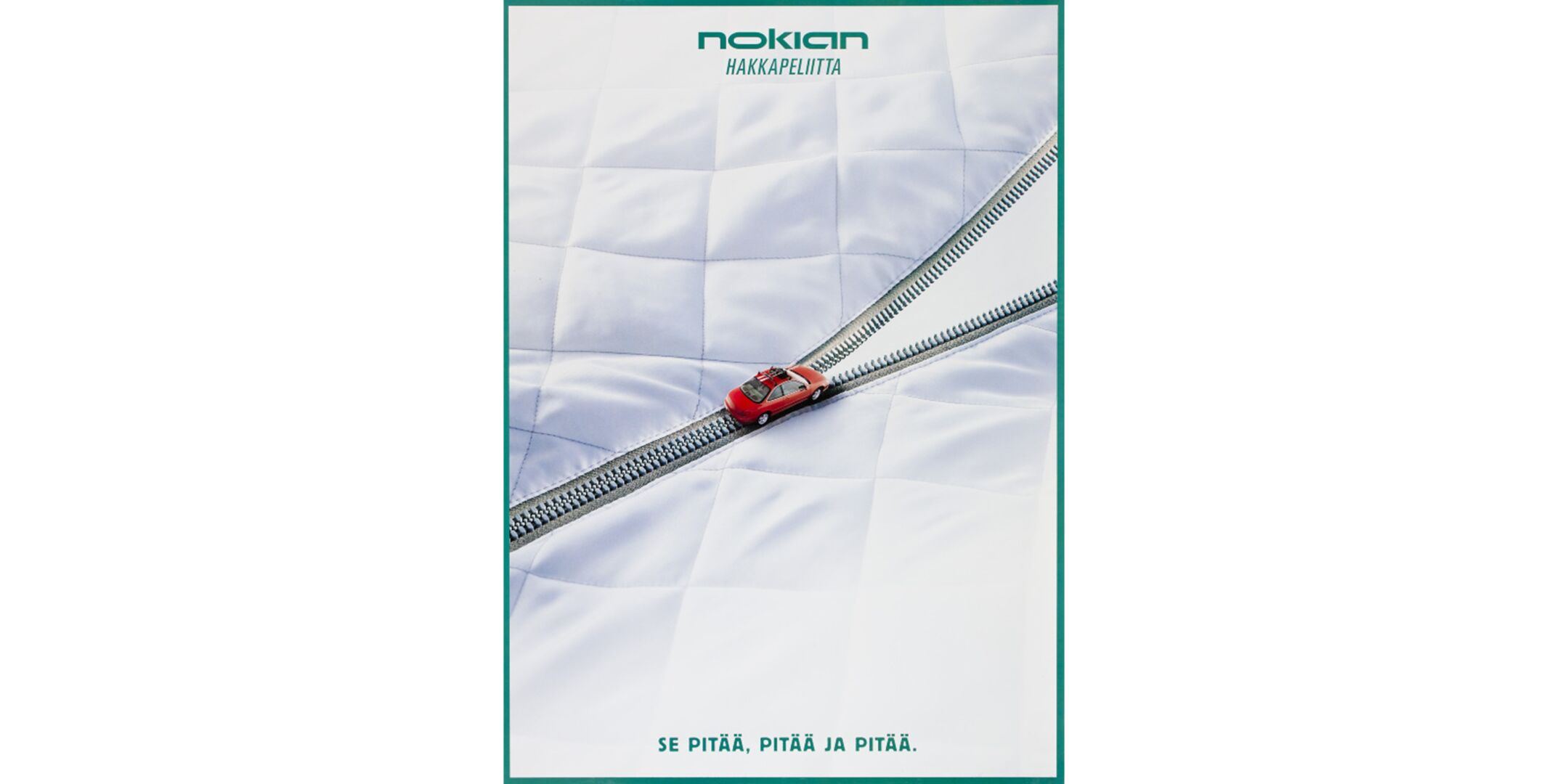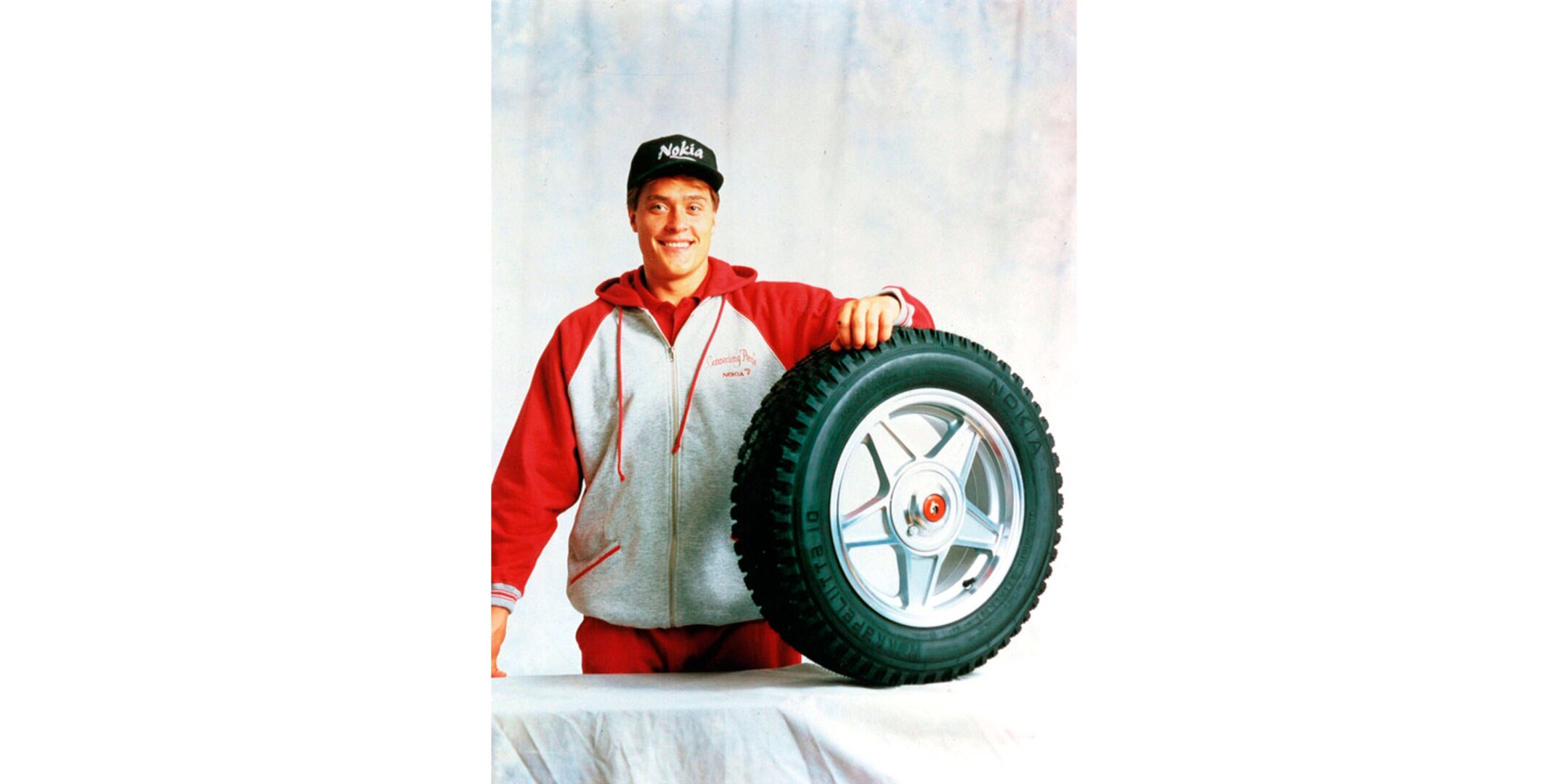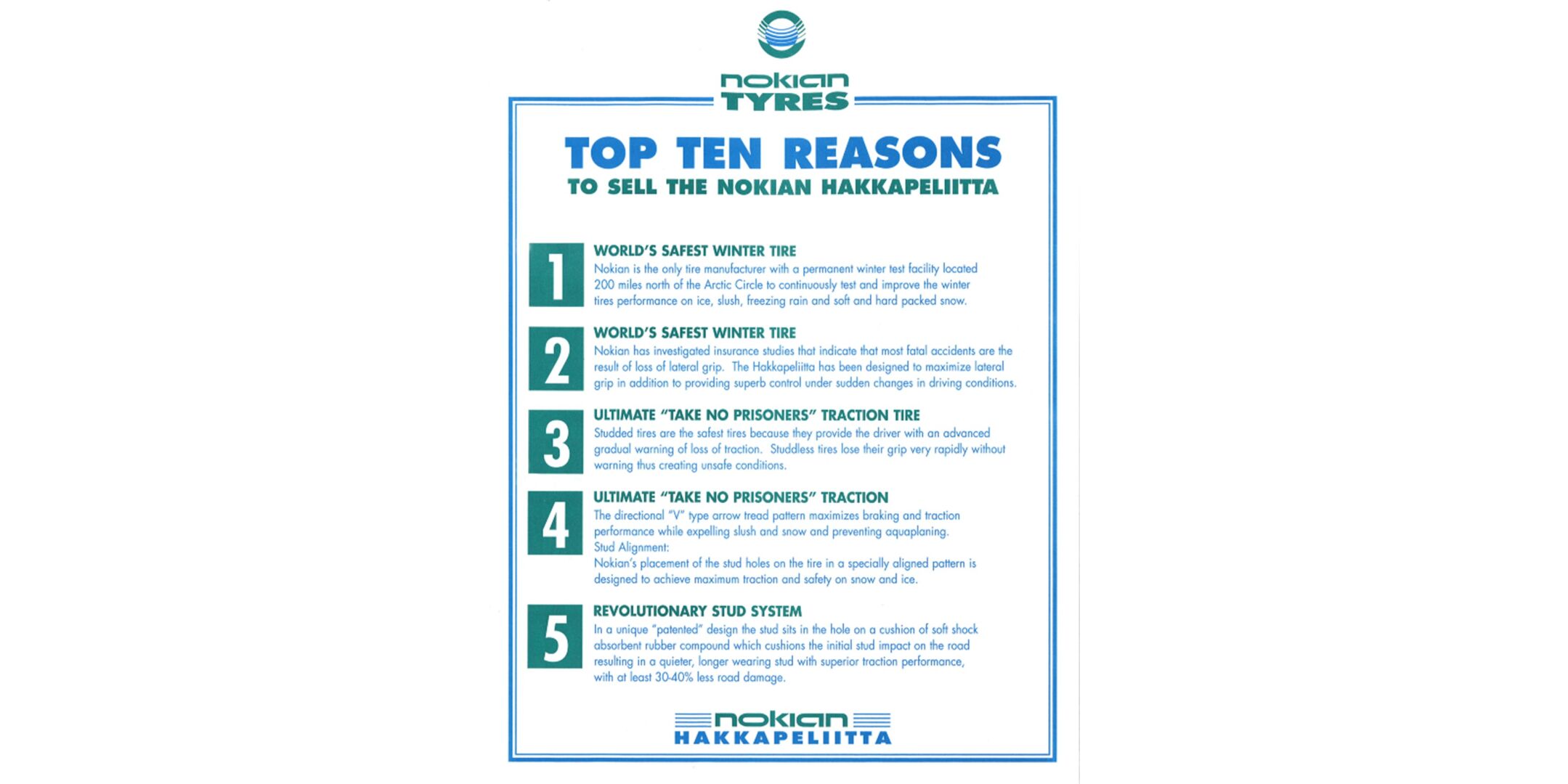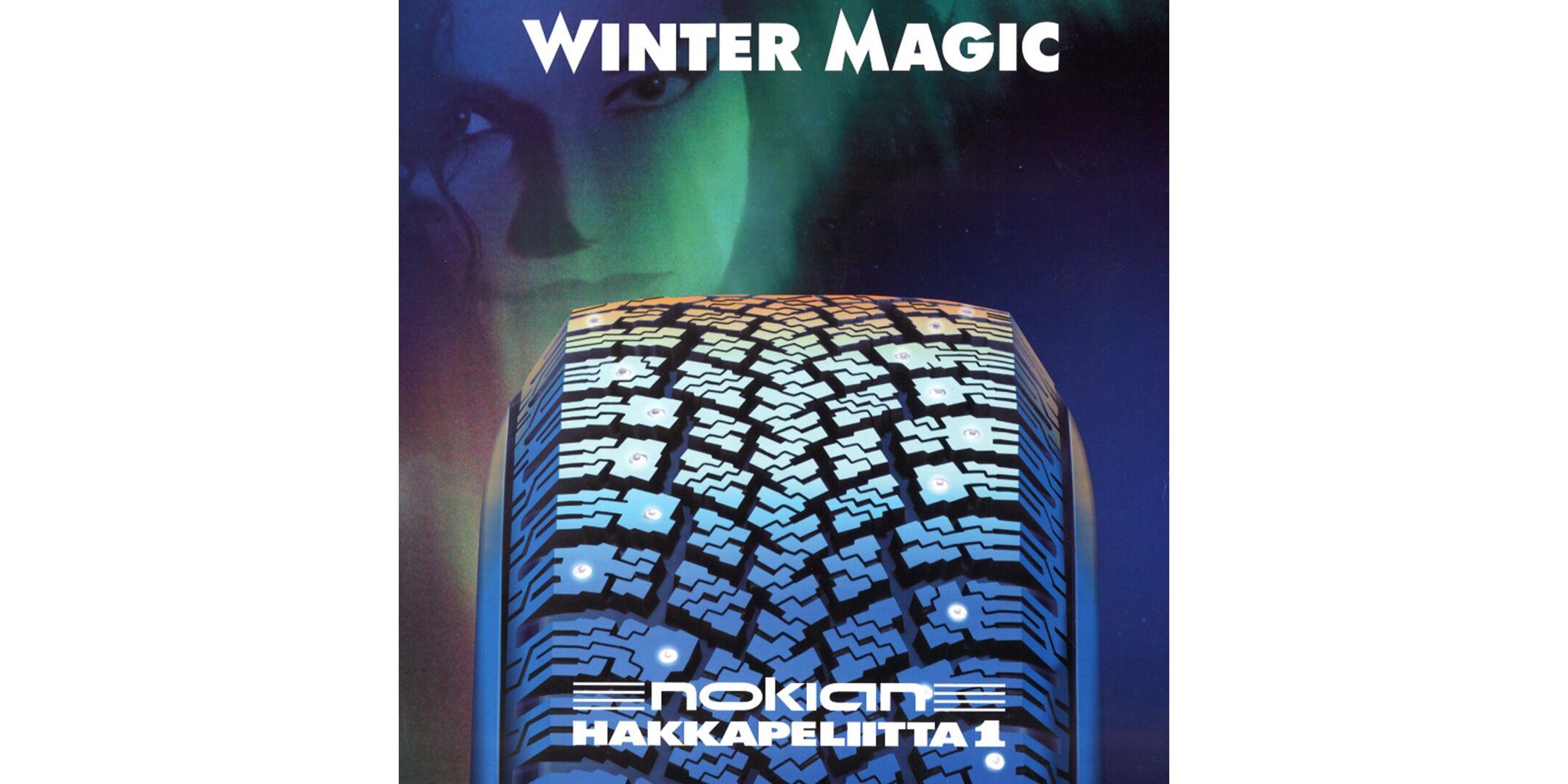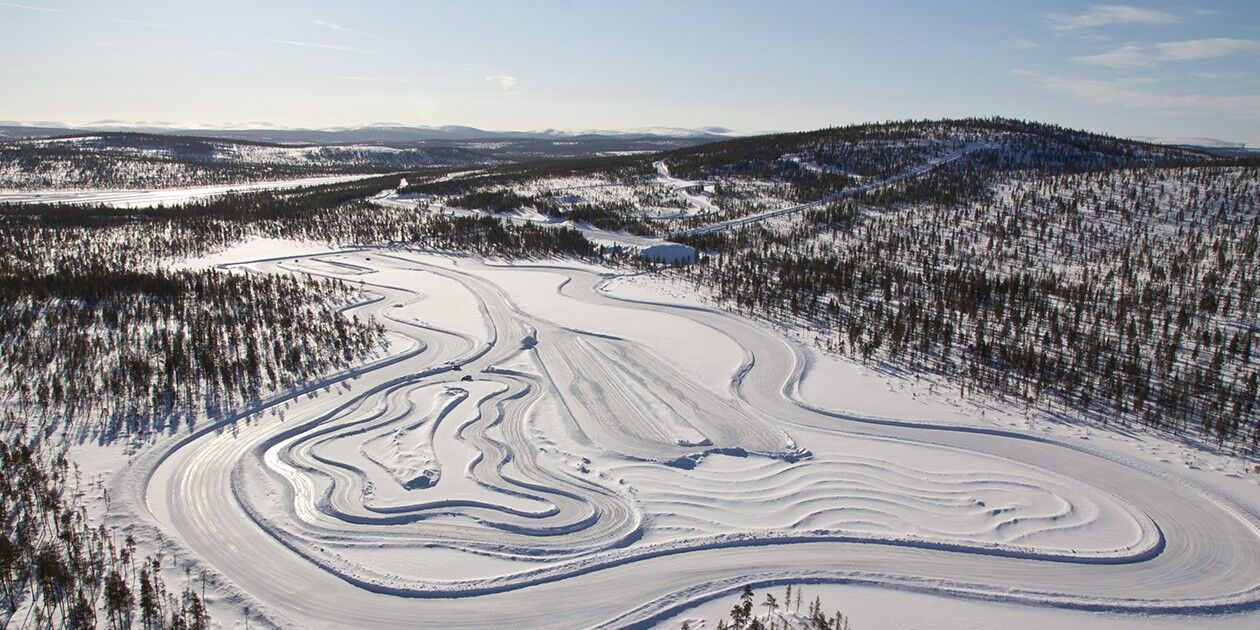Article
1990: Specialisation and green choices
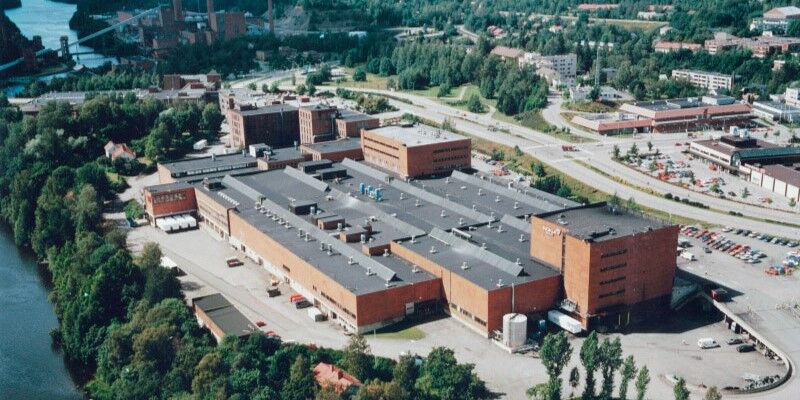
As the winters became milder, non-studded winter tires became more popular. The first non-studded Hakkapeliitta came out in 1991. An entire range of winter tires rolled onto the market in 1996. The Hakkapeliitta 1 continued the traditional series with a new number and Eco Studs, while the Hakkapeliitta NRW offered a non-studded choice.
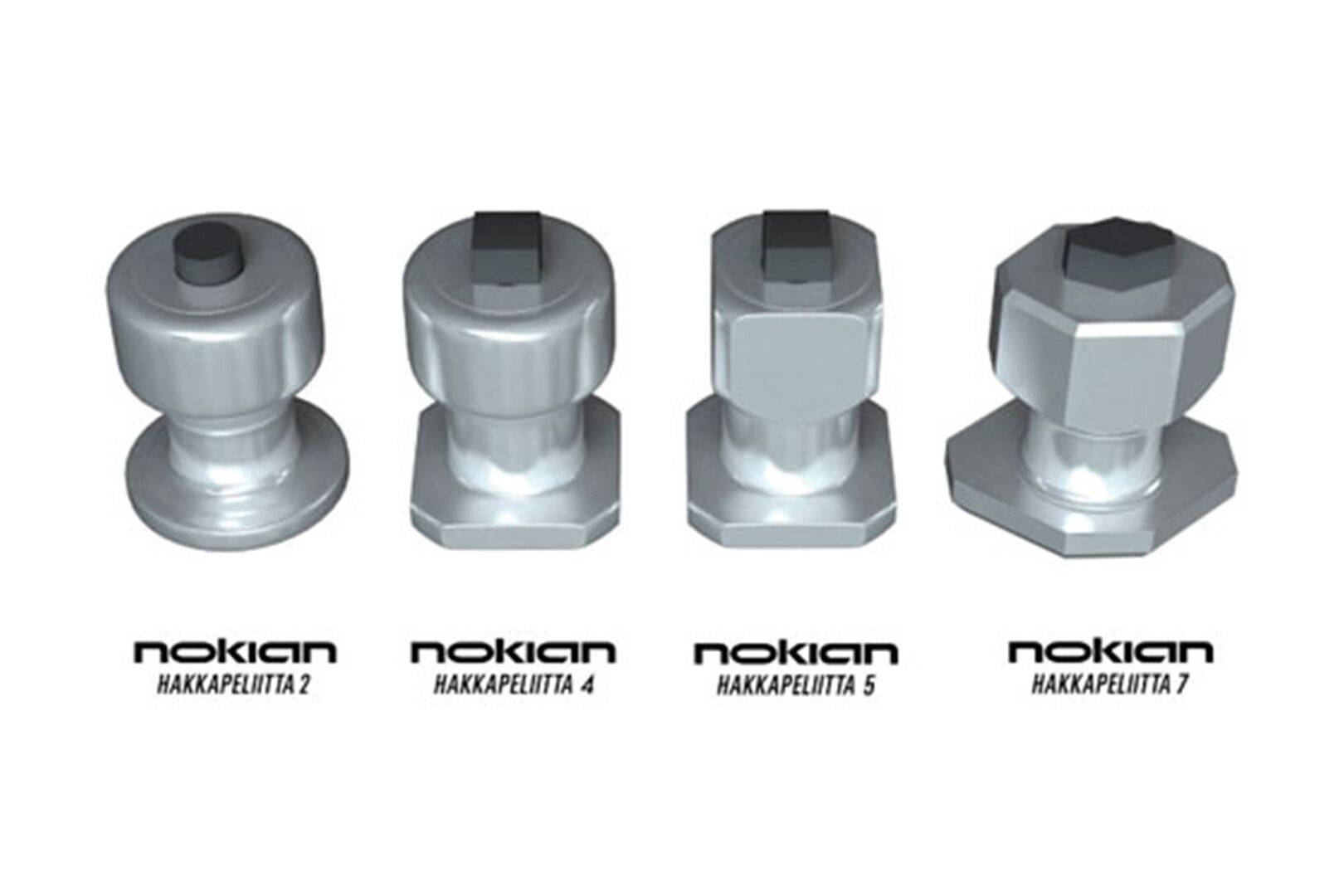
Eco stud system
Studs wear out asphalt, which is already under heavy stress under Northern conditions. This fact was used as a justification by many who had a critical opinion towards studs, all the way from the discussions in the 1960s. Nokian Tyres, not content with merely pondering the situation, took steps to find solutions that would generate less wear.
Environmental awareness among drivers increased and eco-friendliness became an integrated part of the company strategy. Nokia Renkaat was the first tyre factory in the world to acquire the BS 7750 environmental certificate, and it also joined Rengaskierrätys Oy, which manages the recycling of used tyres in Finland.
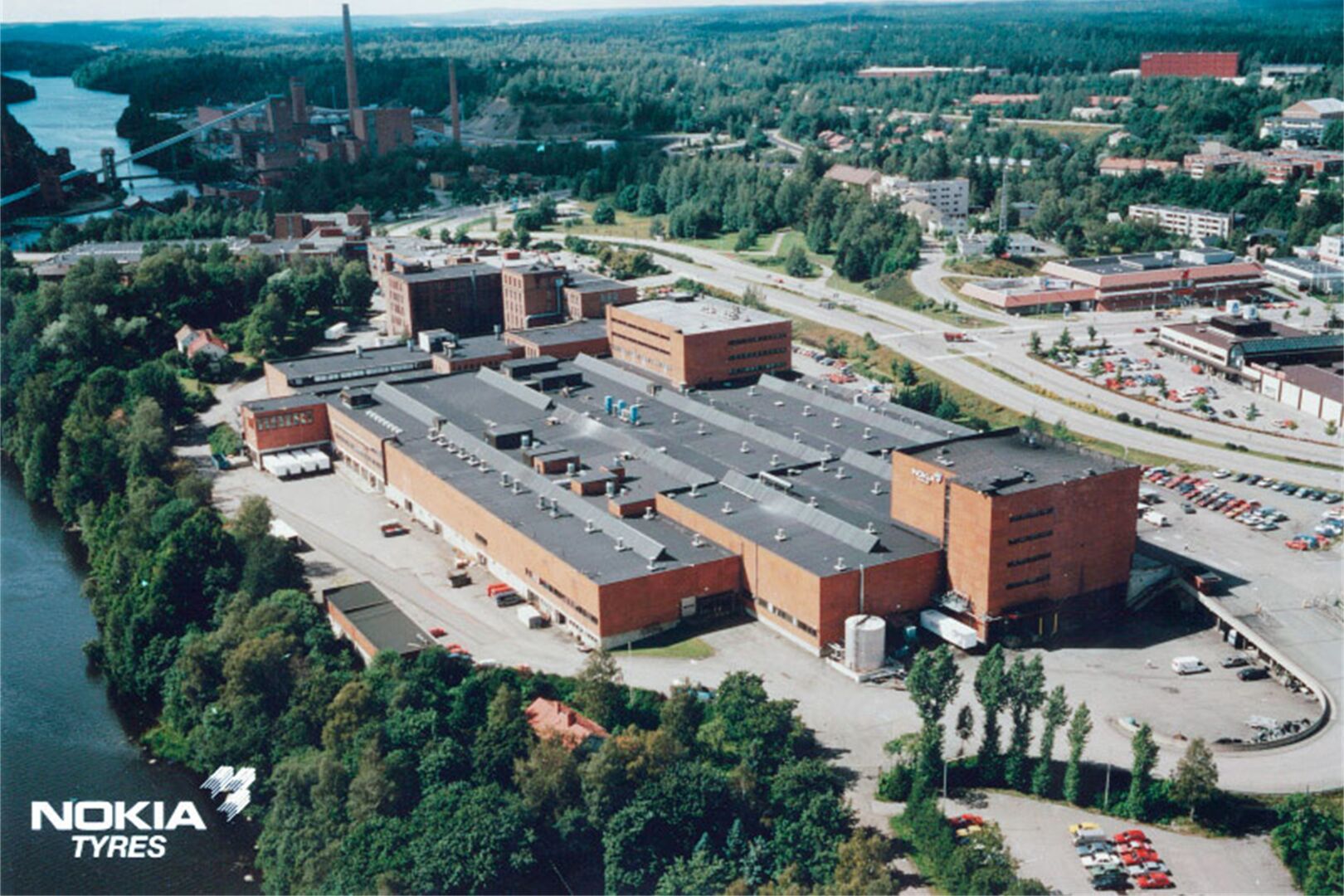
The environment
The environmental protection goals of a tire factory involve three areas: energy consumption, generated emissions and the amount of waste. Emissions of solvents used in tire manufacturing were reduced by building a catalytic incineration plant, as well as by means of product development. During the 1990s, solvent emissions were reduced to less than half of the original amount. In 1997, the crushing of rubber waste in the Koukkujärvi storage area was started, and soon afterwards, waste rubber was routed for reuse directly from the factory.
During the early recession years of the 1990s, the company focused on its special competences, that is, winter tires and forestry tires. After the recession, exports boosted sales and the tire factory was expanded on several occasions. The company’s own distribution network extended to Sweden and Latvia. Over 10,000 tires per day were being manufactured in Nokia.
In 1989, the Nokia group had divested footwear production and technical rubber products. Nokia Renkaat Oy continued as part of the basic industry business unit. In 1995, the tire company returned to its roots as an independent public company and was listed in the Helsinki stock exchange as Nokian Tyres plc.
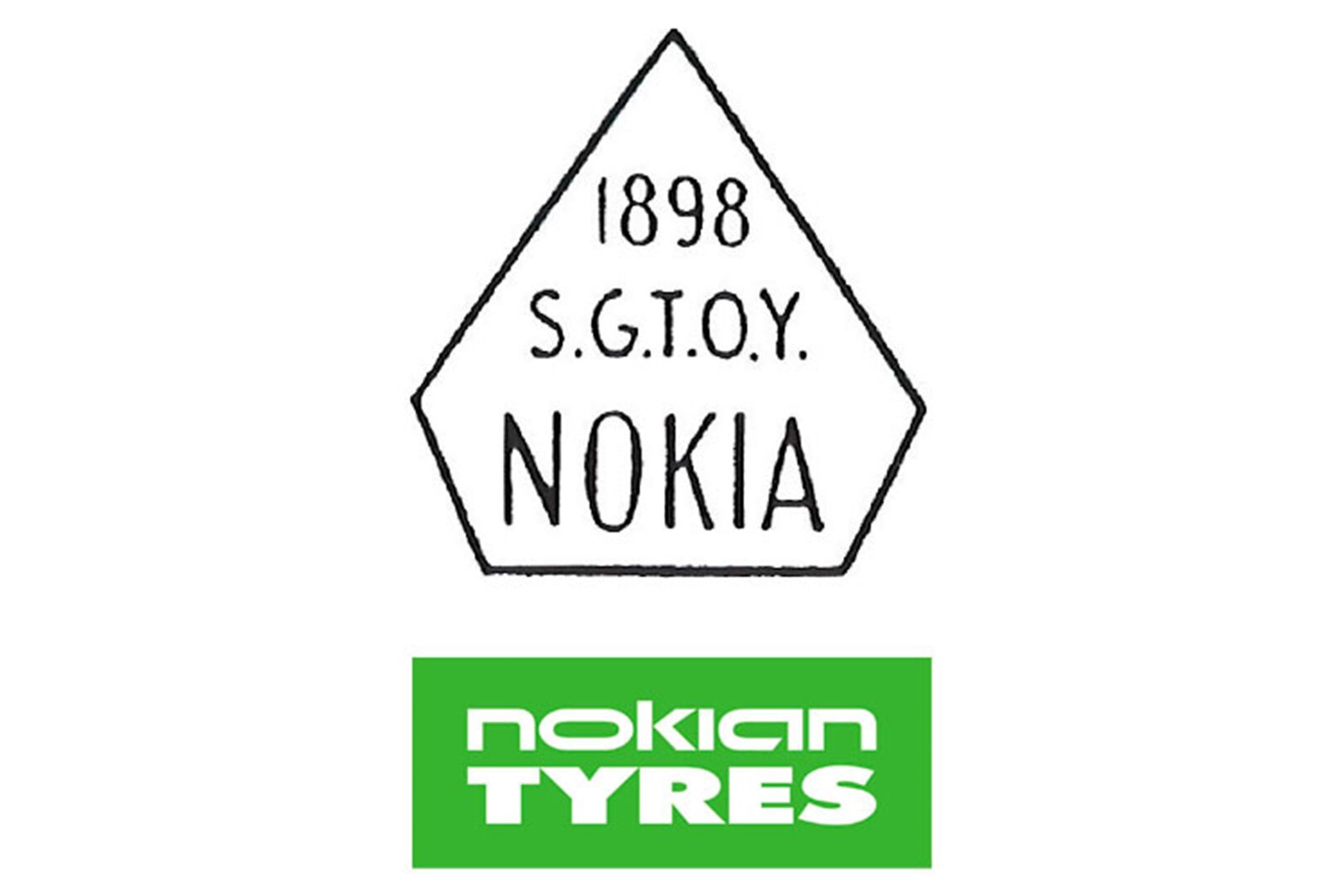
Company development
- 1898 Suomen Gummitehdas Osakeyhtiö
- 1959 Suomen Kumitehdas Osakeyhtiö
- 1967 Oy Nokia Ab/Kumiteollisuus
- 1988 Nokia Renkaat Oy, Oy Nokia Ab/Basic industry
- 1995 Nokian Tyres plc
Picture: In 1995, the tire company returned to being an independent listed company when it was listed on the Helsinki Stock Exchange under the name Nokian Tyres plc.
At the end of the decade, Nokian Tyres unified its distribution chain into the Vianor concept, which became the largest tire retail chain in the Nordics. Over one million passenger car or van tires were sold each year. The Vianor tire retail chain operates in all markets that are strategically important for Nokian Tyres. In addition to tire sales, Vianor offers tire changes and fitting as well as car service and tire storage.
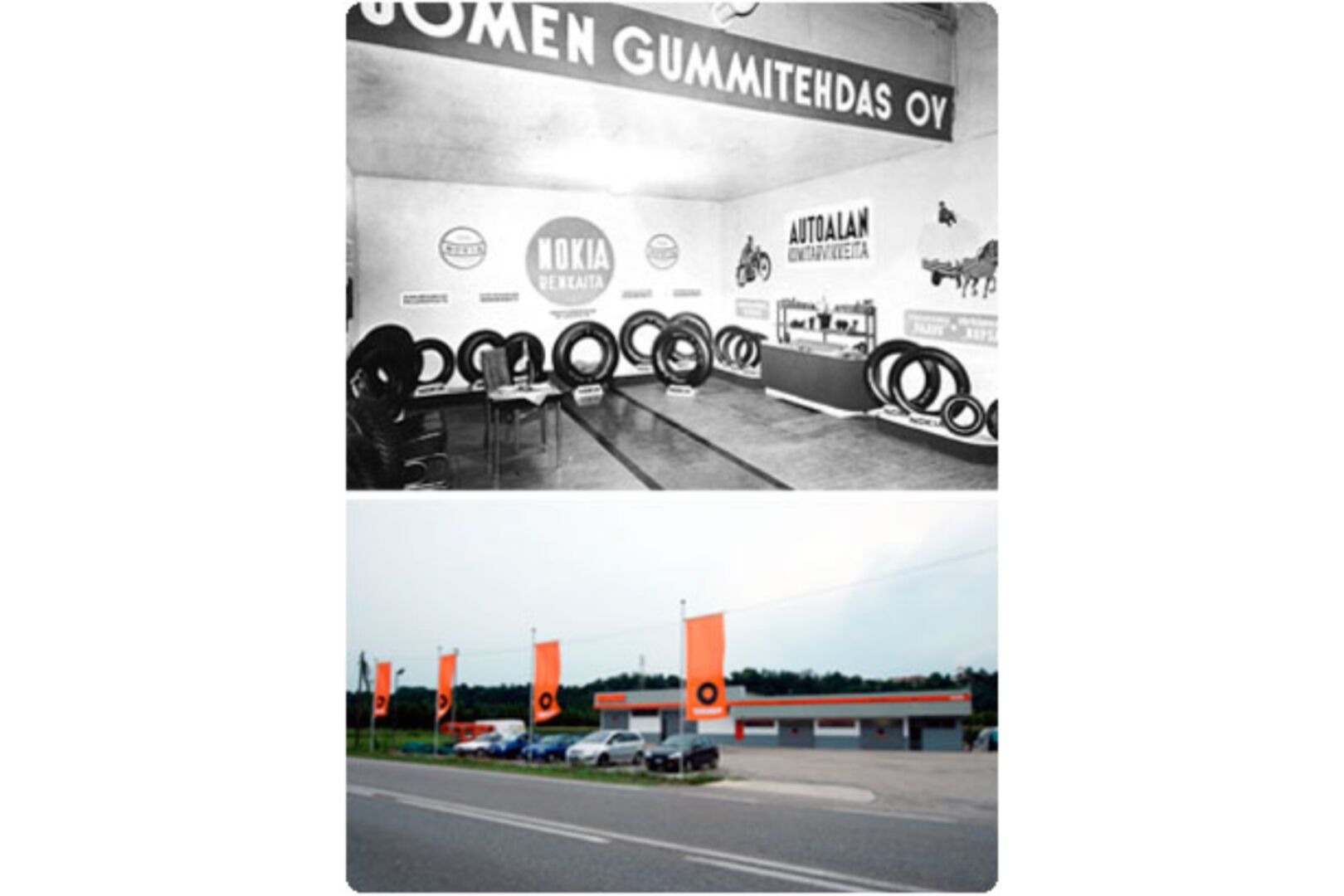
Vianor
Suomen Gummitehdas Osakeyhtiö opened its own sales office in Helsinki in 1900. The most famous location was on Mikonkatu, where even queues formed during the shortage years.
